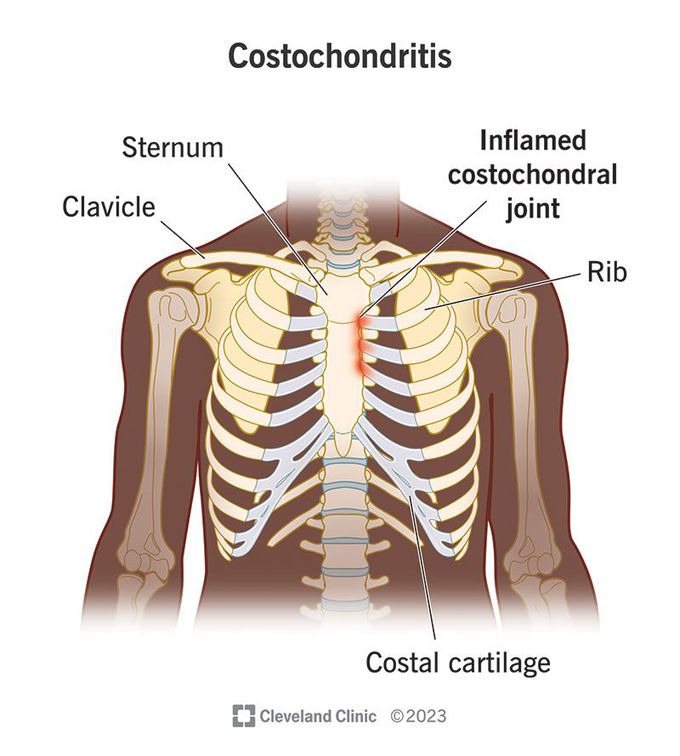


Costochondritis Symptoms
Chest pain linked to costochondritis usually comes on after exercise, minor trauma, or an upper respiratory infection. Sharp pain in the front of your chest, near where your breastbone and ribs meet, typically on the left side. It may spread to your back or belly. Pain when you take a deep breath or cough. It gets better when you stop moving or your breathing is quieter. Tenderness when you press on your rib joints. If you don’t have this tenderness, you probably don’t have costochondritis. If costochondritis happens because of an infection after surgery, you’ll have redness, swelling, or pus discharge at the site of the surgery. Call your doctor if you have any of the following: Trouble breathing High fever Signs of infection such as redness, pus, and increased swelling at the rib joints Continuing or worsening pain despite medication Nausea Sweating Dizziness Go to a hospital's emergency room if you have a hard time breathing or any of the following. They’re not usually caused by costochondritis: High fever that doesn’t get better with fever reducers such as acetaminophen or ibuprofen Signs of infection at the tender spot, such as pus, redness, increased pain, and swelling Persistent chest pain of any type when you also have nausea, sweating, or pain in your left arm. These may be signs of a heart attack. If you’re not sure what’s causing your chest pain, go to the emergency room.

